Critical Analysis: Active Reading
Critical Analysis: Active Reading
Active reading is reading with a purpose. When it comes to critical analysis, the purpose of active reading is to familiarize yourself with your primary text and secondary sources to create a thorough and accurate analysis. You can engage in active reading by paying attention to the type, author, audience, and purpose of a source. Remember the acronym TAAP!
Type
In writing, texts are often categorized based on the form, style, and purpose they share. A few examples include fiction, nonfiction, horror, fantasy, and mystery. Each type of writing typically follows a set of rules that can help us better understand the author’s purpose and the meaning of the text itself. When reading your text, consider how the type of text shapes your understanding of it by asking the following questions:
- What type of text is it (e.g., essay, play, comedy, romance, etc.)? Keep in mind that a text may have more than one type.
- What stylistic or literary elements are important to that type of text (e.g., imagery, rhyme scheme, dialogue, etc.)?
- How does the type of text impact the author’s message? Is that type of text appropriate for the author’s purpose?
- Does the author use any stylistic or literary elements uncommon to that type of text?
- How does the type of text enhance or take away from the author’s message?
Author
Authors are the people who created a text. An author’s personal experiences often impact the type and content of his or her work. Researching an author’s background helps us recognize and understand what influenced his or her work. As you read through a text, ask yourself the following:
- Who created the text?
- When did the author create the text?
- Where did the author create the text?
- In what context was the primary text written (e.g., social, cultural, political, economic)?
- Are there any significant events in the author’s life that may have influenced the type and content of the text?
Audience
The audience consists of anyone who reads a text. Usually, an author considers his or her intended audience when making decisions about a source’s type, tone, and content. When reading a source, think about how the audience shapes the author’s decisions by asking questions such as:
- Who is the intended audience of the source (e.g., artists, scientists, nobles, etc.)?
- How does the audience view the author (e.g., credible, biased, etc.)?
- How would the audience react to the content of the source (e.g., agree, disagree, indifference, etc.)? Why would the audience react that way?
- Are there any other audiences the author may not have considered?
Purpose
Purpose is an author’s reason for writing a text. Three of the most common examples of purpose include to persuade, to inform, and to entertain. Identifying an author’s purpose for writing is useful for determining whether an author’s text is written effectively or not. As you read your sources, consider whether the author accomplishes his or her purpose by asking a few questions:
- Why did the author write the text (e.g., to inform, to persuade, to entertain, to critique, etc.)? (Note: An author may have multiple purposes for writing.)
- What is the main idea, theme, or argument of the source?
- How does the author attempt to accomplish his or her purpose?
- How does the author use ethos, logos, and/ or pathos?
- How does the author use literary or stylistic elements (e.g., character, symbolism, setting, etc.)?
- Does the author effectively accomplish his or her purpose? Why or why not?
Additional Tips on Active Reading
It’s also useful to read your text from different perspectives.
- The first time, read as a consumer. You are reading for enjoyment.
- The second time, read as an academic. You are reading to learn and understand.
- The third time, read as a critic. You are reading to question both the text’s meaning and the author’s decisions.
It’s a good idea to take notes and record your thoughts throughout your active reading process.
Actively reading your sources helps you consider them from more than one perspective. Active reading also fosters critical thinking, which college students are expected to demonstrate in their writing. Once you finish actively reading your sources, you can begin drafting your critical analysis.
Page last updated July 6, 2023.


